A movie about the movies, this film follows Doris Kenyon as she attempts to break into the New Jersey film industry—and is tempted by Robert Warwick to enter a life of sin! Oh my!
This is part of the Workplace in Film & TV Blogathon hosted by Moon in Gemini. Be sure to read the other posts!
Folly of 1917
The film industry has always loved showing itself on the screen and audiences have always enjoyed the backstage tour and so “movies about the movies” are a win-win. Generally speaking, silent films that use this topic either are comedies or melodramas. A Girl’s Folly attempts to thread the needle and balance between these two extremes.
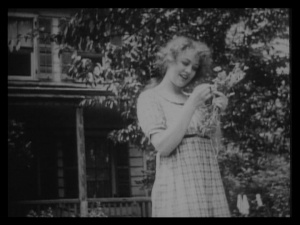
With a screenplay by Frances Marion and direction by Maurice Tourneur, it definitely has enough star power behind the scenes. Tourneur, if you will recall, was one of the top directors of the 1910s and he specialized in visual depth, beautiful lighting and deftly balanced compositions. His great flaw was his tendency to drag the story along and force everything to come to a halt so that he could show us more pretty pictures. In short, pacing was not his strong suit.
That being said, his work for the World film company in New Jersey generally has more pop and zip. I’m just nuts about his cute 1914 comedy The Wishing Ring, for example. A Girl’s Folly was made by World and was released about a month after The Pride of the Clan, a Scottish picture with Mary Pickford in the lead. Later in the year, Tourneur would direct the film that returned Pickford to childhood, The Poor Little Rich Girl.
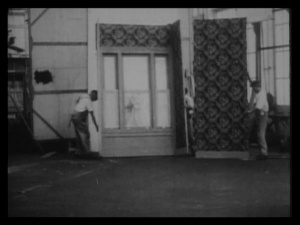
A Girl’s Folly isn’t a famous film by any means but you’ve probably seen clips of it incorporated into documentaries about silent era filmmaking. Tourneur’s impeccable eye and tendency to meander works in the film’s favor as we are lovingly shown the motion picture studio at full hum. Scenery is schlepped, sets are constructed, stages rotate, the actors hone their performances and, oh yes, what about that girl and her folly?
We are introduced to Mary (Doris Kenyon), a young woman living in rural New Jersey. She’s an unabashed bookworm with a taste for overblown romance novel and she dreams of a handsome man wearing tights appearing and romancing her. Alas, her suitor is Johnny Applebloom (Chester Barnett), a local farmer and just as nice as can be but so… rustic.
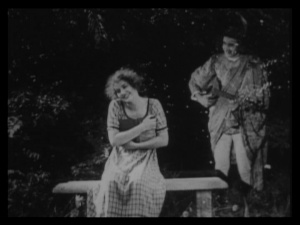
Meanwhile, matinee idol Kenneth Driscoll (Robert Warwick) is starring in a western picture with Johnny Hines working as the villain and a young Leatrice Joy as his leading lady. Driscoll can barely part with his mirrors long enough to do his job and he has a further distraction in longtime girlfriend Vivian Carleton (June Elvidge). Their romance is on the rocks and he has a roving eye.
The two main plot threads unite when the film crew heads out to the rurals to shoot the outdoor stuff. Mary sees Driscoll take a fall with his horse and rushes to help, ruining the shot. This is as solid a meet-cute as ever there was and soon, Driscoll asks Mary if she has ever thought about a career in the movies.
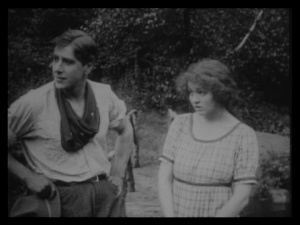
And so she leaves her mother and Johnny and the country behind and takes the train to Fort Lee to be a movie star. (There is also an extended sequence in which her girlfriends try to catch a mouse in their bedroom. It’s all very twee and doesn’t do anything for the plot.)
Anyway, Driscoll puts in a good word and Mary is in! Her screen test is ready to be projected and she is eager to see herself on the screen. Her face lights up with delight as she watched but it is clear that the director, producer and others all are of a different opinion. In short, she stinks. The film wisely does not show her disastrous debut but rather focuses on Mary’s face as she realizes that she has failed. Kenyon plays her disappointment with a delicate hand and the film shows nothing but empathy.
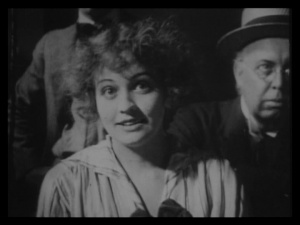
Driscoll finds out about Mary’s disastrous screen test and she confesses that she doesn’t want to return to the country, she wants to stay and wear beautiful clothes and be somebody. Driscoll says that he loves her and can give her everything. There is no ring included in the offer. Will this be Mary’s folly? You’ll have to see the movie to find out!
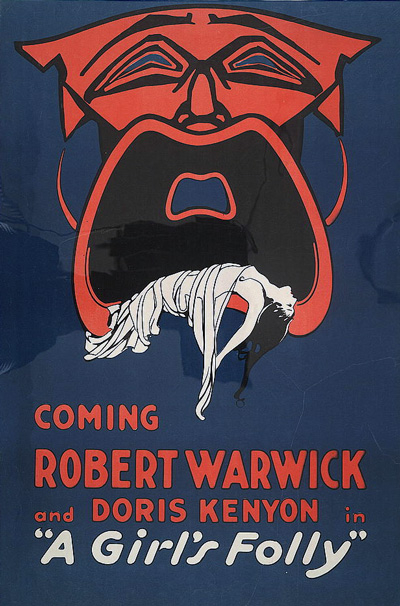
This is a grand little film that doesn’t overplay its hand (melodramatic advertisements notwithstanding). It does not sink into sogginess or sanctimony, as happened with Souls for Sale, another movie about the movies. (“Film stars work their bones to the finger! Welsh miners have it easier! And all they get is $4,000 a week, jewels, a mansion and a herd of borzois! They’re practically ENSLAVED!”) In A Girl’s Folly, the movie people are a wilder lot but they don’t really mean any harm.
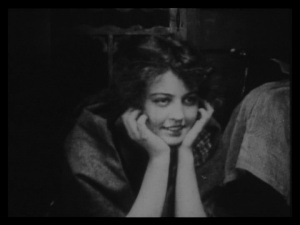
Now lowering stakes is not generally considered a good move in films but we know the story of Mary chapter and verse. She’ll either succumb and descend into ruin or be saved at the last minute and return to her sweetie. Not much suspense to be had no matter how much melodrama is injected. By lowering the temperature of the story, Marion and Tourneur actually made things more interesting. Stripped of its overblown trappings, you can see such an event actually happening at a film studio. (It may have for all we know.)
Further, the behind-the-scenes shots, the charismatic stars and the beautiful cinematography (courtesy of John van den Broek) are plenty entertaining in their own right. Nobody is going to be bored at this picture, I promise.
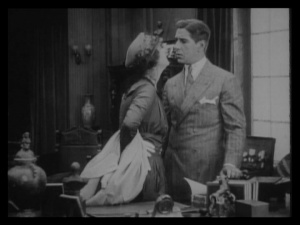
The film is generally to be praised for the compassionate way that it treats its characters. There are no heroes and no villains, just people from different walks of life trying to get by. Driscoll has no mustache to twirl, Mary is silly but not a bad person, Johnny is no glamor boy but he has a good heart. This film doesn’t have a mean bone in its body.
The actors must also be praised. Robert Warwick, Johnny Hines and Leatrice Joy all give double performances: “themselves” and the characters they play in the film-within-a-film. All three are natural and charming when the cameras are off and then move to a more stiff and exaggerated style once the director shouts, “Action!”
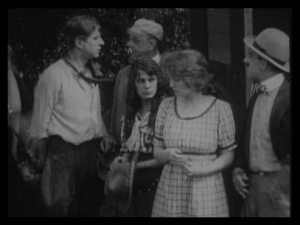
Leatrice Joy is particularly excellent as the energetic western leading lady who turns into a hippity-skippity coquette at the request of the director. I particularly liked it because it shows that audiences of the 1910s found these affected mannerisms as goofy as we do today. (I am a noted curmudgeon regarding hippity-skippity young ladies.)
Doris Kenyon only has one part to play but she does excellent work. Mary could easily have turned into a brat but Kenyon shows that she is just a silly little thing whose pipe dreams both feed her and cut her off from her friends, family and would-be lover. At only nineteen, Kenyon shows restraint that actresses twice her age had not yet mastered.
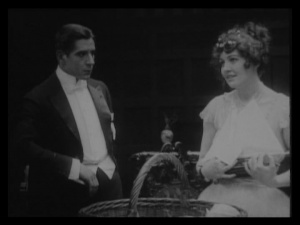
I particularly enjoyed the symmetry of her character’s journey. At the start of the film, Mary daydreams about a dashing man coming to romance her and is annoyed when Johnny shows up and breaks her fantasy. At the end, she is remembering Johnny and surprises herself by finding her dashing lover’s interruption to be annoying.
And now we’re taking a slight detour. Josef von Sternberg was employed at World/Paragon at this point and a great number of people have claimed that he played the cameraman in A Girl’s Folly. I was inclined to agree as the mustache and droopy eyes do look like Sternberg but then the cameraman started walking about in the film.

Reader, he’s too short, far far too short to be Sternberg. The cameraman looks to be about five feet tall, if that. All the women tower over him by a good half-foot (including petite Leatrice Joy) and he has to stand on a box when he is cranking his camera. This wouldn’t matter in the grand scheme of things but Sternberg was both about five foot five and twenty-three in 1917. People do not get five-to-eight-inch growth spurts in their mid-twenties, generally speaking. Sternberg was not a tall man but he wasn’t this noticeably short. (I looked up full-length pictures of Josef von Sternberg standing next to Marlene Dietrich, 5’6”, and Sergei Eisenstein, 5’7”, and even accounting for high heels and puffy hair, Sternberg indeed looked about 5’5”. Yes, I know this is weird)
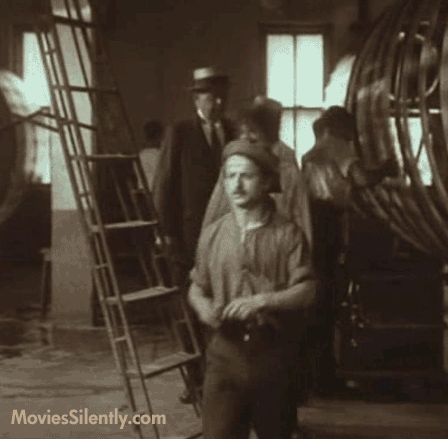
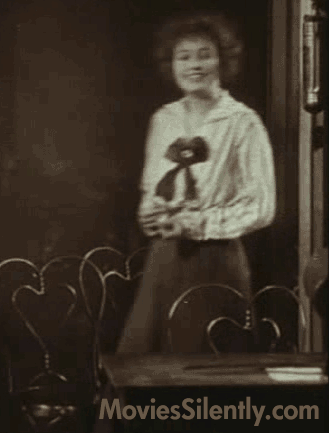
So, like claiming Lon Chaney appeared in Suspense and Walter Huston appeared in Sherlock Holmes Baffled, I am labeling this one unlikely with a chance of nope. And, no, I really don’t wish to discuss it further because I’m already sick of the topic.
While all the ingredients are of the very best quality, it is the behind-the-scenes material that really puts this one over the top. Granted, your enjoyment of the film will be based on how much you like your film history but I think it’s safe to assume that anybody watching an obscure 1917 silent film would have at least a passing interest.
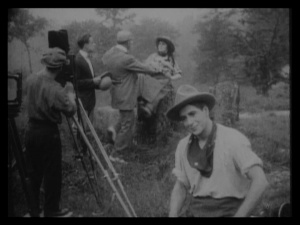
A Girl’s Folly is a refreshingly amiable picture with a sweet story, talented cast and tantalizing look at the New Jersey film industry in its twilight years. It’s an absolute delight and I give it my highest recommendation.
Where can I see it?
An excerpt A Girl’s Folly was released on DVD by Flicker Alley as an extra on the Before Hollywood There Was Fort Lee, New Jersey documentary. The excerpt about 25 minutes long and omits all the character building for Doris Kenyon, likely due to the fact that those are the film sections with the most decay. The film features a gorgeous score by Robert Israel and gold tinting.
The complete one-hour film was released on DVD by ReelclassicDVD.com as a double feature with The Beloved Blackmailer, another World picture. It includes a very good score performed on a Wurlitzer organ by Bernie Anderson. (My screenshots are from the ReelclassicDVD.com disc, the header image is from Flicker Alley.)
I’m in favor of getting both editions if you have the cash. Yes, the Flicker Alley only has an excerpt but the disc also includes a documentary and The Wishing Ring, which I unabashedly love and think everybody should see.
***
Like what you’re reading? Please consider sponsoring me on Patreon. All patrons will get early previews of upcoming features, exclusive polls and other goodies.
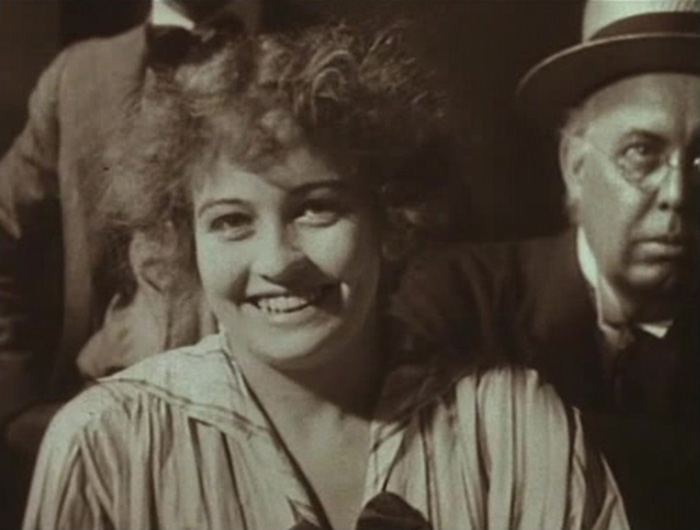
You have convinced me that, when I get around to this movie, it will become an instant new favourite.
PS: I so enjoy your writing. It is such fun, and you make me smile and smirk in the best places.
Aww, thanks so much!
I love movies about movies, and I know I’ll love this when I (eventually) see it.
I also have to agree with Caftan Woman re: your writing. It’s always fresh and engaging – a real treat.
Thank you so much!
Ah, movies about movie-making. I love them! I need to check this one out. Thanks so much for bringing it to the blogathon!
Thanks for hostessing! 😀